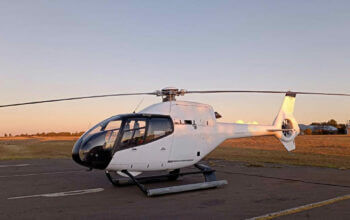Robinson Helicopter Company has issued a new safety alert after receiving a report of a cracked AO16-6 main rotor blade on an R22 helicopter used for cattle mustering.

The incident is also the subject of an airworthiness bulletin issued by Australia’s Civil Aviation Safety Authority (CASA). According to the bulletin, the R22 Beta II was engaged in low-level, slow-speed operations when the pilot experienced an unusual increase in vibration levels and made a precautionary landing.
Subsequent inspection revealed a crack approximately 160 millimeters (6.3 inches) in length, emanating from the trailing edge and running chordwise toward the D-section spar. The bulletin notes that evidence of very minor corrosion was observed on the trailing edge of the blade, which had been in service for approximately 1,780 hours (of a life limit of 2,200 hours).
“The blade is currently being investigated by the ATSB [Australian Transport Safety Bureau] however at this stage details are limited with the root cause yet to be determined,” the CASA bulletin states.
In its safety notice, Robinson identifies the area of the blade in which the crack occurred, and instructs R22 operators to perform a careful visual inspection of this area during the daily preflight inspection, using a stepladder if necessary.
The notice also states that if an unusual rotor system vibration is detected in flight, the pilot should land immediately and have the blades examined by a qualified technician. The CASA bulletin adds that “increased vibration levels should be reason to initially suspect a cracked blade,” and cautions “against the practice of rebalancing the blade to enable return to service unless a thorough inspection of the blade has been carried out.”









